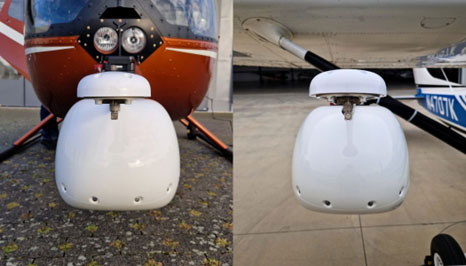Introduction: In today’s rapidly evolving geospatial industry, the need for accurate, efficient, and scalable data collection systems has never been greater. From large-scale infrastructure projects to niche environmental monitoring efforts, the demand for precise spatial …
Introduction: In today’s rapidly evolving geospatial industry, the need for accurate, efficient, and scalable data collection systems has never been greater. From large-scale infrastructure projects to niche environmental monitoring efforts, the demand for precise spatial data spans a broad range of applications. Yet, current geographical systems often fall into one of two distinct categories: traditional, large-scale data collection systems or highly customized, purpose-built solutions. Both have their strengths and limitations, but as industries increasingly demand more adaptability, the landscape of geospatial technology is shifting. In this article, we’ll explore the advantages and challenges of both approaches and highlight how emerging platforms like AISPECO’s HELIUX ecosystem are designed to bridge the gap between scale and flexibility.
Geographical systems generally fall into two categories: large-scale data collection systems used in traditional industries, and custom-built solutions designed by specialized engineering firms for specific purposes. Both types tend to be inflexible, each in different ways.
Large-scale systems are highly efficient for broad projects like nationwide mapping or monitoring large infrastructure, providing standardized data and cost-effective solutions across vast areas. However, they are slow to adapt to changing needs. While they excel in covering wide areas, they lack the flexibility needed for smaller, specialized tasks. Their high upfront costs and limited adaptability to niche applications can be significant barriers, particularly for smaller businesses. As a result, these systems often become inefficient and costly when applied to more focused or specialized data collection needs, as they are not designed for the precision and agility required in targeted projects.
On the other hand, custom geographical systems are growing in demand as they offer tailored solutions for industries such as power utilities, barrier reef protection, railways, and gas lines. These systems provide precise spatial data, crucial for making informed decisions. Their main advantage lies in their ability to meet specific requirements, delivering higher accuracy and relevance than generic systems. This customization supports more effective monitoring, maintenance, and management of infrastructure, enhancing operational efficiency and environmental conservation. However, custom systems are also rigid in their own way. They are designed for a single purpose and do not easily adapt to tasks beyond their original scope. Survey companies often need specialized instruments for each project, leading to high entry barriers, lower service quality, and increased costs. Furthermore, the reliance on specialized providers for updates and ongoing support introduces risks in terms of continuity and cost control, making custom systems both a solution and a challenge for those seeking precision and flexibility.
AISPECO is developing the HELIUX ecosystem, a flexible geospatial platform that allows any device to be used across various carriers, maximizing its capacity. We believe that customers should be empowered to make small adjustments themselves, without requiring external engineering support. HELIUX was engineered with that principle in mind. Whether deployed on helicopters, airplanes, or other vehicles, the platform enables efficient operations across diverse sectors—from forestry to utilities—using the same adaptable systems.
At AISPECO, we understand the challenges our customers face. They are constantly navigating changing tender requirements, dealing with the natural aging of sensors, and striving to ensure maximum equipment utilization. Our team comprises former survey operators, so we know first-hand the importance of being able to make quick adjustments without relying on specialized engineering services. This is exactly why we created HELIUX—to put control in the hands of our clients.
Data requirements may vary across projects, but simple adjustments—like changing the angle of a LiDAR—should not demand specialized expertise. HELIUX’s adaptability eliminates the need for new hardware each time, enabling users to make system modifications on their own. This reduces dependency on external services, helping clients seamlessly transition between operations, such as moving from helicopters to airplanes, without compromising performance or data quality.

Figure 1. Hybrid system. HELIUX LITE on Robinson R44 and Cessna182P
This not only streamlines operations but also cuts down on costs while ensuring precise, reliable data. HELIUX universal compatibility offers a solution that scales with the user’s needs, making it an invaluable tool for industries requiring both flexibility and efficiency in their geospatial operations. By shifting to mass market manufacturing and standardizing our controllers and software across various configurations, we provide customers with a unique advantage. They can seamlessly expand into new market segments without needing to invest heavily in specialized equipment or undergo lengthy training processes. This level of standardization significantly lowers entry barriers for clients, enabling them to explore diverse industries, projects, and applications with minimal friction. As a result, customers can respond more quickly to emerging opportunities and industry demands, fostering a more competitive environment. The ability to swiftly adapt to changing circumstances not only boosts operational agility but also positions our clients to stay ahead of their competitors by being faster to market with innovative solutions. This approach ensures that our clients remain nimble, efficient, and prepared to tackle new challenges across various industries and applications.
The geospatial industry is at a crossroads, where both large-scale and custom solutions have their place, but neither fully meets the diverse demands of today’s businesses. AISPECO’s innovative approach is designed to bridge that gap, offering the flexibility and efficiency needed to support industries as they navigate the complexities of modern data collection. The future of geospatial systems is not just about large-scale or custom solutions—it’s about finding the balance between both. And with platforms like HELIUX, that balance is becoming a reality.
About Author
With over a decade of experience in corporate leadership, Mantas Vaskela excels in driving organizational success through strategic process optimization and innovation management.
As the CEO of AISPECO, Mantas leads a pioneering company that manufactures advanced geospatial data collection platforms for planes, helicopters, drones, and other vehicles. Under his leadership, AISPECO provides highly customizable hardware solutions that help clients reduce overhead costs, streamline surveying and inspection operations, and easily adapt sensor configurations and data-collection methods.
Recognized by Geospatial World as one of the top 50 rising stars for 2024 in the geospatial industry, Mantas Vaskela is committed to delivering exceptional results and driving innovation that empowers organizations to thrive in today’s dynamic business environment.




